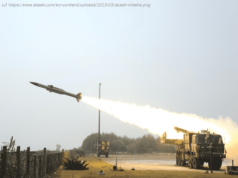As 17 monstrous wildfires continued to rage through California the US President Donald Trump declared a ldquomajor disasterrdquo in California
CALIFORNIA, U. S. – As the monstrous Carr Fire in California, along with 16 other wildfires, continued to rage through the region, the U. S. President Donald Trump declared a “major disaster” in California.
On Sunday, as California continued to deal with 17 different wildfires, with two of them growing at a deadly pace, California Governor Jerry Brown called on Trump to help the state fight and recover from another devastating wildfire season.
On Sunday morning, the White House said in a statement that Trump has declared a “major disaster” in California and ordered federal funding to be made available to help recovery efforts in areas affected by wildfires.
The White House said that Trump had “ordered Federal assistance to supplement State, tribal, and local recovery efforts in the areas affected by wildfires and high winds beginning on July 23,2018, and continuing.”
Later in the day, Governor Brown confirmed that the White House had approved a disaster declaration for Shasta County, California, which is the region mainly affected by the massive Carr Fire.
He said in a statement that California had submitted the request for a Presidential Major Disaster Declaration earlier that day to help with the impact of fires across the state.
Governor Brown’s office added that over 14,000 firefighters are currently battling 17 major fires burning across California.
The statement added that in addition to the Shasta declaration, FEMA was considering requests for disaster declarations for Lake, Mendocino and Napa counties „on an expedited basis.“
The statement said, „The Mendocino Complex fire remains a dynamic and rapidly changing challenge for firefighters, with additional evacuation orders issued on Saturday and thousands of structures remaining threatened by the massive wildfire.”
The two fast-growing wildfires in the state, collectively named the Mendocino Complex, have expanded by more than 25 percent overnight and have continued to spread.
The two fires have burned in Mendocino, Lake and Colusa counties, about 90 miles north of San Francisco.
The Ranch Fire, the larger one of the Mendocino Complex fires, has reportedly consumed more than 207,000 acres, most of them in the Mendocino National Forest.
Meanwhile, the other blaze, the River Fire, has burned almost 48,000 acres in Lake and Mendocino counties.
According to authorities, the Mendocino Complex fires, which cover more than two-thirds the size of sprawling Los Angeles, have swelled to become larger than the deadly Carr Fire.
The Carr fire in northern California is said to be one of the most destructive in the history of California.
The massive blaze about 162 miles (261 km) north of Sacramento, was said to be raging across more than 154,000 acres as of late Saturday.
Carr Fire has so far killed seven and destroyed over 1,500 structures, while the Mendocino Complex fires have forced the evacuation of more than 20,000 residents and destroyed more than 100 structures.
According to Cal Fire, Carr Fire is 41 percent contained and some evacuees were now being allowed to return.
The River and Ranch fires meanwhile have grown to cover a total of 229,000 acres and were considered 34 percent contained.
On Saturday, Pacific Gas & Electric spokesman J. D. Guidi said in a statement that a worker from the utility company was killed while working with a crew to restore power in western Shasta County.
The worker’s death became the seventh death recorded overall from the massive Carr Fire.
Meanwhile, authorities confirmed that an eighth fire-related death occurred in the Ferguson Fire, east of San Jose.
Capt. Brian Hughes of the Arrowhead Interagency Hotshot Crew was killed in the fire.
Cal Fire has said that through last week, California fires had torched about 290,000 acres (117,300 hectares), more than double the five-year average over that same period.
Further, according to the National Interagency Fire Center, so far this year, U. S. fires have burned 5 million acres, much more than the ten year average.






